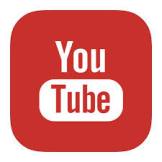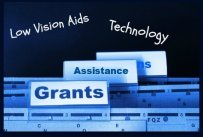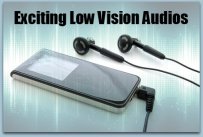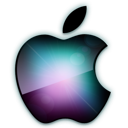Teaching Visually Impaired Students With Assistive Technology

Teaching visually impaired students have to learn how to use assistive technology. There are dozens of differentcategories of assistive technology, and many can help students with low vision keep up with their non-visually impaired peers. By using assistive technology, low vision students can level the playing field and enjoy the same books, watch the same movies and interact on social media just like their classmates.
It is imperative that not only educators, but parents, understand the special circumstances for the visually impaired and teach children how to cope and live with their low vision.
How teaching visually impaired students helps
There are a lot of assistive technology devices and software programs that can help students learn, but some of the more popular types include:
Talking Text Applications
These types of assistive technology read aloud books, computer screens, text messages, and more to students. They can be used on smartphone devices, word processor programs and even the Internet.
Popular readers include:
- PlexTalk
- Eclipse Reader
- Victor Reader Soft
Magnifiers
These tools can magnify printed text (such as in a textbook or reading book) as well as computer screen text so that students can read more clearly.
Some popular screen magnifiers include:
- ZoomText
- BigShot
- Ai Squared
- JAWS
Recognition Apps
These apps are often used through a student’s cellphone. The smartphone uses technology that scans a picture, barcode or other items and tells the student what they are looking at. LookTel Recognizer, for example, is a recognition app that can identify everything from credit cards to identification cards to DVDs. While it is a premium app, Low Vision Technologies has access to this app here, or you can go directly to the Apple App Store here, LookTel Recognizer also includes a barcode scanner, which will make it easier for visually impaired students to learn how to shop on their own.
Stand Alone Options
Other assistive technology can be used as a standalone feature. For example, portable magnifiers or CCTVs. PDAs and smartphones with calendars are also essential for students with low vision because it can help them stay on track with assignments and appointments. There are also note takers, like Braille n’ Speak or BrailleNote that can help visually impaired students with their assignment or taking notes in class to refer back to later.
Students with low vision have options today. There are assistive technologies that are designed exclusively for children and students with visual impairment. These devices are meant to close the gap between their peers — something you can never put a price on for a child.
Google-Glass finally has it's app available to students, is this for you?
welcome the e-bot pro
Connect E-bot PRO to your iPad™ or Android™ tablet, Mac™ or PC to view and interact with your reading, writing or distance magnification image. Navigate your reading material smoothly and easily using joystick control or touch-screen gestures which move the camera in response to your touch. Use E-bot PRO to read a book, see the whiteboard or take notes in class. OCR scan a full page of text, then listen to it read aloud through a built-in speaker or headset (speaker jack available for earphone or headset).
Display E-bot on your Windows PC or MacBook laptop. Set up is quick and the USB connection is easy, so moving from classroom to classroom or between the office and conference room is hassle-free.
I’m passionate about playing a role in teaching visually impaired students and helping them do well with their studies.
I’ve researched the technology available for those of us with low vision and if you’d like to enjoy further details, fill in the form below and I’ll send them out to you.
Get Exciting Low Vision Technological Secrets Sent To You...
Low Vision > Assistive Technology > Teaching Low Vision Students

















